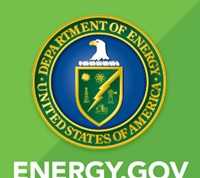NREL Report Examines Energy Use in Cities and Proposes Next Steps for Energy Innovation
WASHINGTON, D.C. – August 5, 2015 – (RealEstateRama) — What U.S. cities are doing to reduce their energy use is outlined in a new report from the Energy Department’s National Renewable Energy Laboratory (NREL) that sets the stage for broader discussion and analysis. Given increasing urbanization and their large energy footprint, cities are a prime focal point for establishing a clean energy future.
The report, “City-Level Energy Decision Making: Data Use in Energy Planning, Implementation, and Evaluation in U.S. Cities,” analyzes and presents information learned from a sample of 20 cities across the United States, from Los Angeles to Boston, including a diverse sample of population size, utility type, region, annual greenhouse gas reduction targets, vehicle use, and median household income.
“City-level practitioners are doing inspiring energy-related work and are hungry for resources and tools to help them,” NREL lead author Alexandra Aznar said. “This paper provides a snapshot of the kinds of energy-related actions cities are taking, as well as the challenges they face. The results confirm the need for many of the tools the Cities-LEAP project is developing.”
The report compares climate, sustainability, and energy plans to better understand how cities are taking energy-related actions and measuring their impacts. Some common energy-related goals focus on reducing city-wide carbon emissions, improving energy efficiency across sectors, increasing renewable energy, and increasing biking and walking.
The publication also evaluates the relationship between city goals, actions, metrics, and data and provides suggestions for cities to make the best use of the energy planning tools available. Next steps for cities are outlined, including how cities can set more strategic energy goals, prioritize actions, and lead clean energy innovation. Along with reinforcing the need for clean energy planning and evaluation, recommendations include:
- Tailoring energy-related actions and goals to city characteristics, including socioeconomics, geography, and built environment
- Understanding the cost-effectiveness of specific actions
- Integrating energy considerations into all planning processes (capital improvement plans, comprehensive plans, etc.).
This report is part of the Cities Leading through Energy Analysis and Planning (Cities-LEAP) project, which aims to deliver energy data and analysis that enables cities to make clean energy decisions using strategic energy analysis. It was funded by the Energy Department’s Office of Energy Efficiency and Renewable Energy.
NREL is the U.S. Department of Energy’s primary national laboratory for renewable energy and energy efficiency research and development. NREL is operated for the Energy Department by The Alliance for Sustainable Energy, LLC.
###
Visit NREL online at www.nrel.gov










